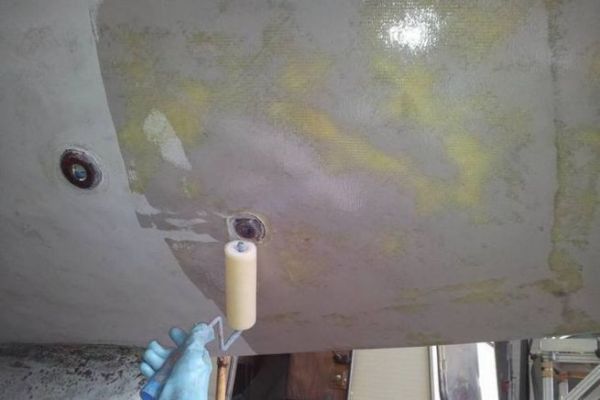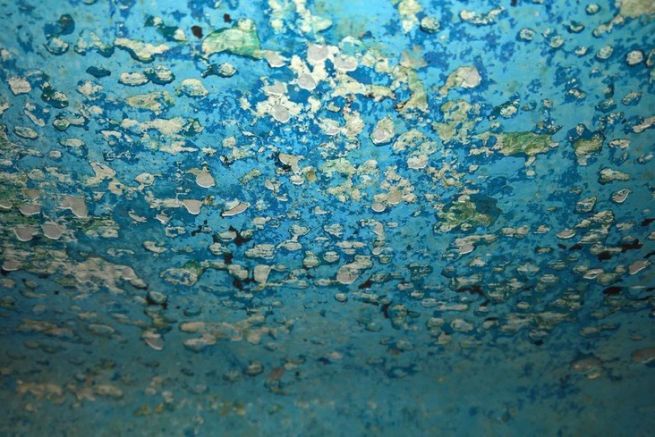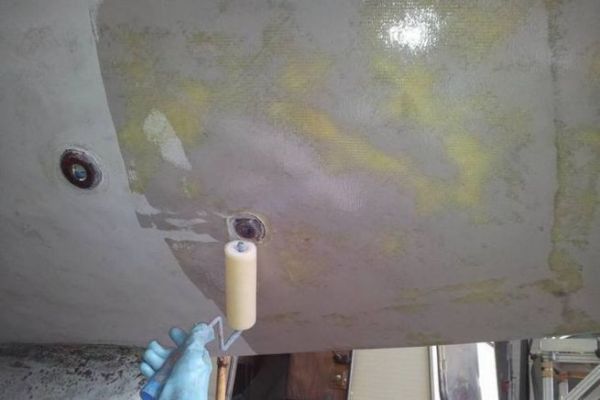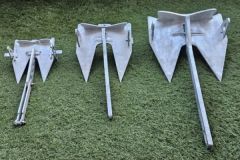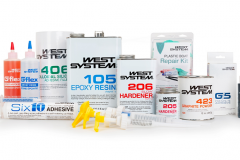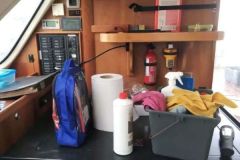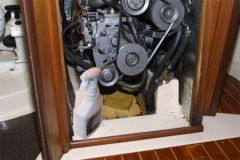Prevent osmosis
To avoid osmosis, there's no need for preventive treatment, even if it does exist. It involves applying a solvent-free, water-based epoxy resin to the gel-coat, which seals your boat. But this process is rather expensive.
Instead, reduce the amount of time your boat is in the water. Winterize your boat. By keeping your boat dry out of season, you'll allow the water accumulated in the hull to evaporate.
And if osmosis has set in, how should it be treated?
To prevent your boat's hull from delaminating, it must undergo an anti-osmosis treatment. This is a multi-stage process, to be carried out by a professional.
Step 1
First, the boat's hull must be exposed. To do this, the gel-coat must be peeled back to reveal the polyester fibers, using an electric planer, or the sandblasting or hydrogumming technique.

Step 2
The shell should then be left to air-dry. Allow between 3 and 6 months in winter and around 3 months in summer. To speed up the process, you can place your boat in a dry, heated area and use a dehumidifier. To check hull humidity, use a hull humidity tester.
Step 3
The next step is to coat the hull with an epoxy product solvent-free to prevent the formation of bubbles that promote osmosis. Choose an enclosed area with low humidity. You'll need to be very careful to respect temperature and drying times, which is why it's wiser to entrust this task to a professional.
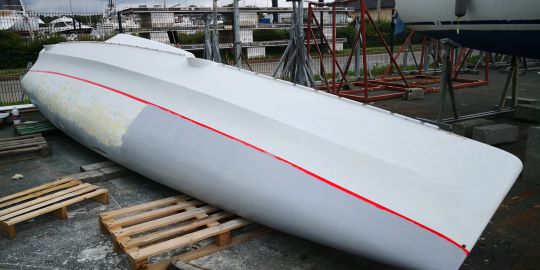
It takes between 3 and 3 coats applied with a roller to cover the hull of your boat.
Step 4
The final step is to apply an antifouling. The epoxy layer must first be sanded down, then a primer applied and finally the antifouling.
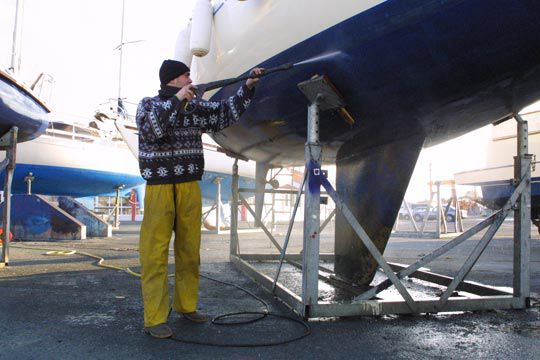
How much does it cost?
Before taking any action, ask for a quotation to assess the viability and relevance of curative treatment. Some boats are old, and their value is very low. This is all the more important if you're buying a second-hand osmosis-treated boat.
A square meter of hull surface costs around ?400.
How long does an anti-osmosis treatment last?
After approximately 3 weeks of curative treatment (not including drying time), your boat will be ready for the water again. You don't normally need to repeat this treatment, but it's possible that some areas may not have been fully treated.
Is it possible to buy an osmosis boat?
Yes, but you'll need to call in an expert to assess the state of osmosis of the hull. You'll also need to factor the cost of treatment into the purchase price, and therefore negotiate with the seller.
If you choose to buy an osmosis-treated boat, look for one that has not yet undergone curative treatment, or that has been professionally treated.
